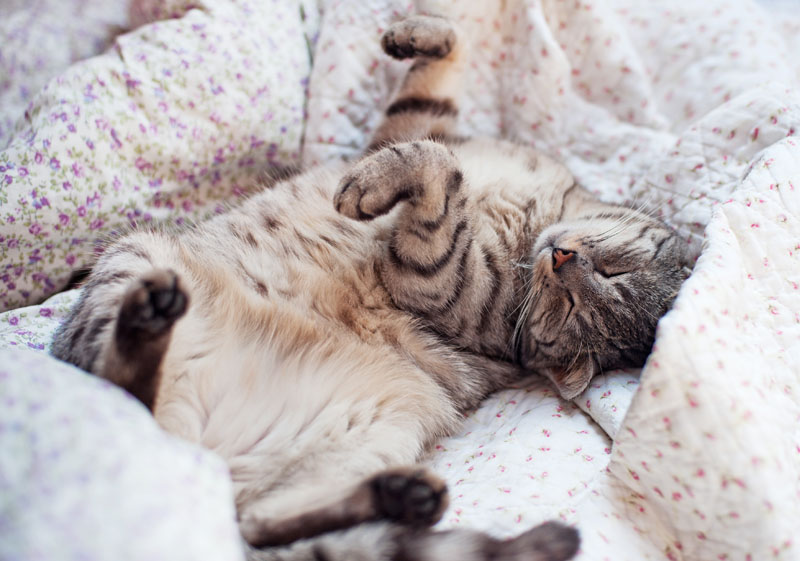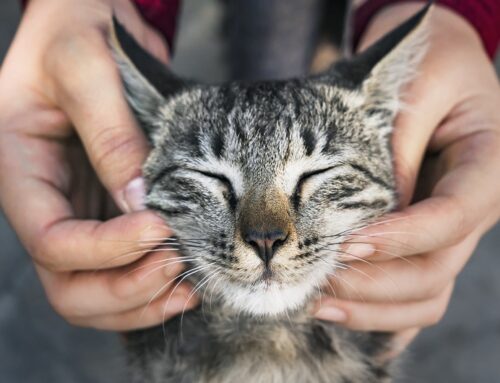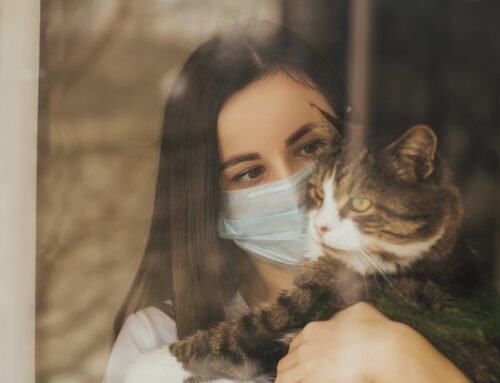The last of the major abdominal organs we will discuss is the GI (gastrointestinal) tract. The GI tract includes the mouth, pharynx, esophagus, stomach, small intestine and large intestine; however, we will be focusing on the stomach and small and large intestines. The GI tract is responsible for processing nutrients from food, passing waste material from the body, and protecting the body from harmful substances. The feline intestinal tract is specialized for the digestion and absorption of animal-based proteins (for more information on feline nutrition, see the Sept 2014, Oct 2014, Nov 2014, and Jan 2015 newsletters). The gut is also the largest immune organ in the body and is key to maintaining overall health!
The stomach is a large sac-like dilatation of the GI tract. It stores large volumes of food before it passes into the small intestines. The lining of the stomach contains glands that produce acids and enzymes that aid in the digestion of food. The walls of the stomach contain muscles that mix and move the food. The glands of the stomach also produce mucus, which protects the stomach from being digested by its own acid and enzymes. Most small food particles will exit the stomach within 2.5 hours.
The small intestine is the longest portion of the GI tract and is about two and a half times the length of the cat on average. It consists of three distinct areas: the duodenum, the jejunum and the ileum. The duodenum is the first part and contains openings that allow digestive juices from the pancreas and gallbladder to enter the intestines. The jejunum is the longest part of the small intestine and is highly mobile, being able to move into whatever unoccupied space is available within the abdomen. The ileum is short and connects to the large intestine.
The small intestine is the major digestion and absorption site. The interior lining of the small intestines has numerous microscopic, finger-like projections called villi. These villi stick out towards the center of the intestine and greatly increase the surface area available for digestion and absorption (in humans the surface area is over 100 square feet!).
The large intestine is wider and shorter than the small intestine. It is thin-walled and baggier than the small intestines. The large intestine participates in the last phase of digestion. It has three very important functions. It recovers water and electrolytes from the food; it forms and stores feces; the bacteria in the large intestine produce enzymes that break down difficult-to-digest material.
The lumen (the digestive tunnel) of the gastrointestinal tract is actually considered to be outside of the body, and much of it is heavily populated with potentially pathogenic microorganisms. It is thus important that the immune system establish and maintain a strong presence at this mucosal boundary, and indeed, the digestive tube is heavily laden with helpful lymphocytes, macrophages and other cells that participate in immune responses. Most small food particles will reach the colon within 6 hours.
Aside from its other functions, the gastrointestinal tract is a lymphoid (immune) organ, and the lymphoid tissue within it is collectively referred to as the gut-associated lymphoid tissue (GALT). GALT represents almost 70% of the entire immune system! The lumen is exposed to potentially pathogenic microorganisms (bacteria, fungi, viruses) and toxins every day. This unique position of the GI tract (both inside and outside of the body) means that it must work extra hard to protect the body and is exemplified by the huge amount of immune cells which reside within it.
I hope everyone has found this interesting and, as always, if there is a topic you would like covered, please e-mail the clinic and let us know! Until then, we want everyone and everykitty to have safe and happy holidays! We’ll see you next year! =^_^=








